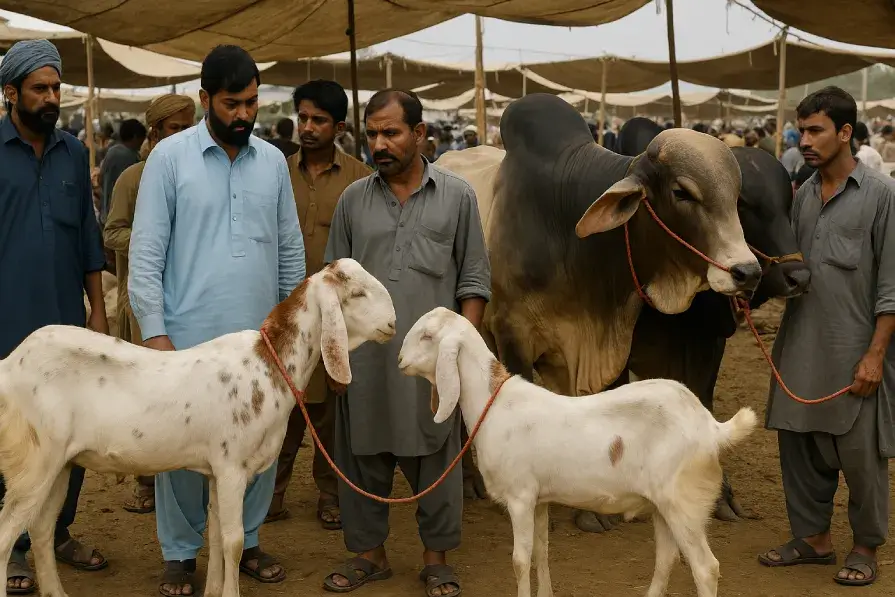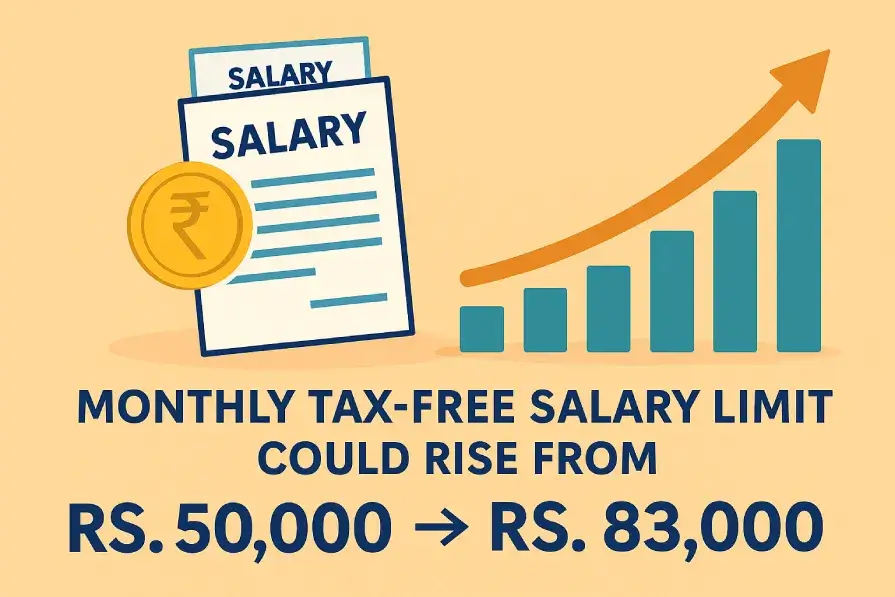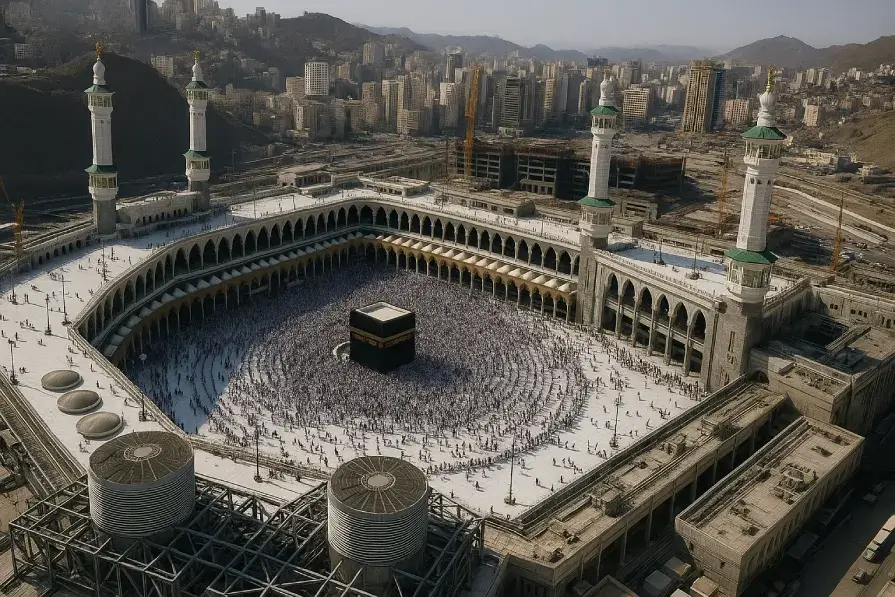Donald Trump Shares AI-Generated Image of Himself as Pope, Stirring Reactions Ahead of Vatican Conclave

U.S. President Donald Trump used AI-generated content to post an artistic representation of himself as the Pope through political persuasion together with religious symbols and AI software on his Truth Social platform. Trump appeared in the image wearing official pope robes along with a golden cross pendant and elevated stature while pointing towards the sky from beneath his mitre hat. The post delivers comical messages yet initiated various digital reactions that drew attention to artificial intelligence programming and political branding methods and religious representation evaluation.
A Playful Post with Political Undertones
AI technology produced this image when Trump spoke those humorous remarks to media personnel this week. The day before the upcoming May 7 Vatican assembly to select a new pope upon the demise of Pope Francis Trump told press personnel that he was thinking about becoming papacy candidate. Leadership under us would establish greatness for the Vatican. The photography serves to complete Trump’s previous witty remarks about journalists from his recent media interaction.
The political rationale existing within this post remains apparent even though its contents separate from politicization. This image emerged shortly after Trump paid respect to Pope Francis by joining his funeral service while promoting a New York cardinal to lead because of his “very strong” qualities. The press conference revealed Trump unwilling to endorse a papal candidate but he exhibited signs he aimed to gain Catholic voters ahead of the upcoming U.S. presidential race.
Trump AI Pope Image
Protagonists and antagonists equally recognized the Trump AI Pope image as soon as it was published. Post discussion was taking place on X (former Twitter) and Facebook with Instagram users about the purpose of the image as comedic expression or business proposal or nonsensical mixture of faith and public service. Several times during the day each of the hashtags #PopeTrump #AIArt and #VaticanMeme managed to reach global trending status.
The religious practice received condemnation from people who believed Trump had demoralized its core essence. An X user criticized Trump for bad judgement by promoting his brands through papal aesthetics. Various observers expressed gratitude for past president Trump because they saw his clever humor as he presented this image which they identified as his defining style with a tactical campaign objective.
A Deeper Look at the AI Content Boom
Through its release on social media the content triggered increased scrutiny of moral problems raised by AI-generated political content. The ethical use of artificial political visuals by public officials remains a subject of continuous debate since critics demonstrate how these materials trick people who do not use modern media systems.
Through social media Donald Trump has previous engagements with artificial intelligence content and media alterations to market himself to his following. His distribution of the fake Time magazine covers represents just one component of previous content including manipulated political videos as well as altered images portraying him both as a superhero and as a sculptural figure on Mount Rushmore.
This image stands out because it emerged shortly after the pope passed away yet it retains symbolic importance.
The Conclave and Catholic Voter Relevance
The religious calendar of Catholics features May 7 because it has been selected for the Vatican to choose its new pontiff. Every region of the planet will be represented by cardinals who must select the next pope following the tenure of Pope Francis as discussions about Catholic Church theology intensify.
Despite being officially nonreligious the United States government operates under a Catholic population of 20% of its voting constituency. Trump has gained support from conservative Catholics by vehemently supporting anti-abortion policy along with demonstrating commitment to religious freedom rights since becoming president. The appearance of Trump during a worldwide Catholic conference especially through jokes would help him obtain fundamental backing from this religious affiliation.
Social Media’s Role in Shaping Modern Political Identity
Trump joins various political leaders who employ social media along with fabricated content for building his public profile. The present political shows incorporate viral-content as their base to produce attention-grabbing visuals through edited video clips along with staged photographic moments.
Trump established his digital performance art leadership through sharing this specific image. The content Trump shares establishes intersections between fact and promotion along with satire. Through his approach Trump generates extensive public discussion concerning the nature of his motives together with his communications thus maintaining continuous attention from public dialogue.
Religious Leaders and Public Reactions
The Vatican has not released any declarations about this image at present. Historic religious leaders from across the nation and clergy members exhibit apprehension about the displayed image.
Rev. Thomas Miller from St. Joseph Parish Church in Chicago explains that using both religious icons and sacred imagery in a satirical manner causes spiritual believers to experience offense. According to him politicians specifically need to avoid treating religious symbols casually during their political campaigns and must approach such symbols with due care.
Several opinion makers affirmed that the artwork served as a satiric commentary. Carla Hopkins from the media industry claimed that this image came from AI technology for its purpose as a contemporary meme. The creative method used in this work follows the same methods that Saturday Night Live and television show parodies use for their productions. The essential factor in this case involves the origin of the parody coming from a former president.
AI, Satire, and the 2024 Election
AI-generated content will serve as the main tool for election campaigns in the 2024 U.S. presidential run. Experts predict that Trump’s apparently harmless humorous digital content including his papal post will create new deceptive online practices across coming years.
For electoral purposes platforms need to create special identification systems to mark AI-generated content because political candidate content requires such labeling according to electoral organizations. Researcher Kate Dawson states in AI ethics that transparency stands as the most essential principle. People require better tools to distinguish between satire and misinformation in order to differentiate between both forms.
Conclusion: A Meme or a Message?
The AI-generated depiction of Trump as the Pope seems like yet another digital meme among numerous others spreading during the current information era. But its impact, both in media coverage and public discourse, reveals much about the evolving intersection of technology, religion, and politics.
This incident functions as proof that in current political discourse a depictions of Trump created by AI can acquire more public attention than traditional campaign addresses.









